RARE! WWII 1943 U.S. 13th Air Force Guadalcanal Solomon Islands U.S. Army Air Force Combat Flight Navigation Map
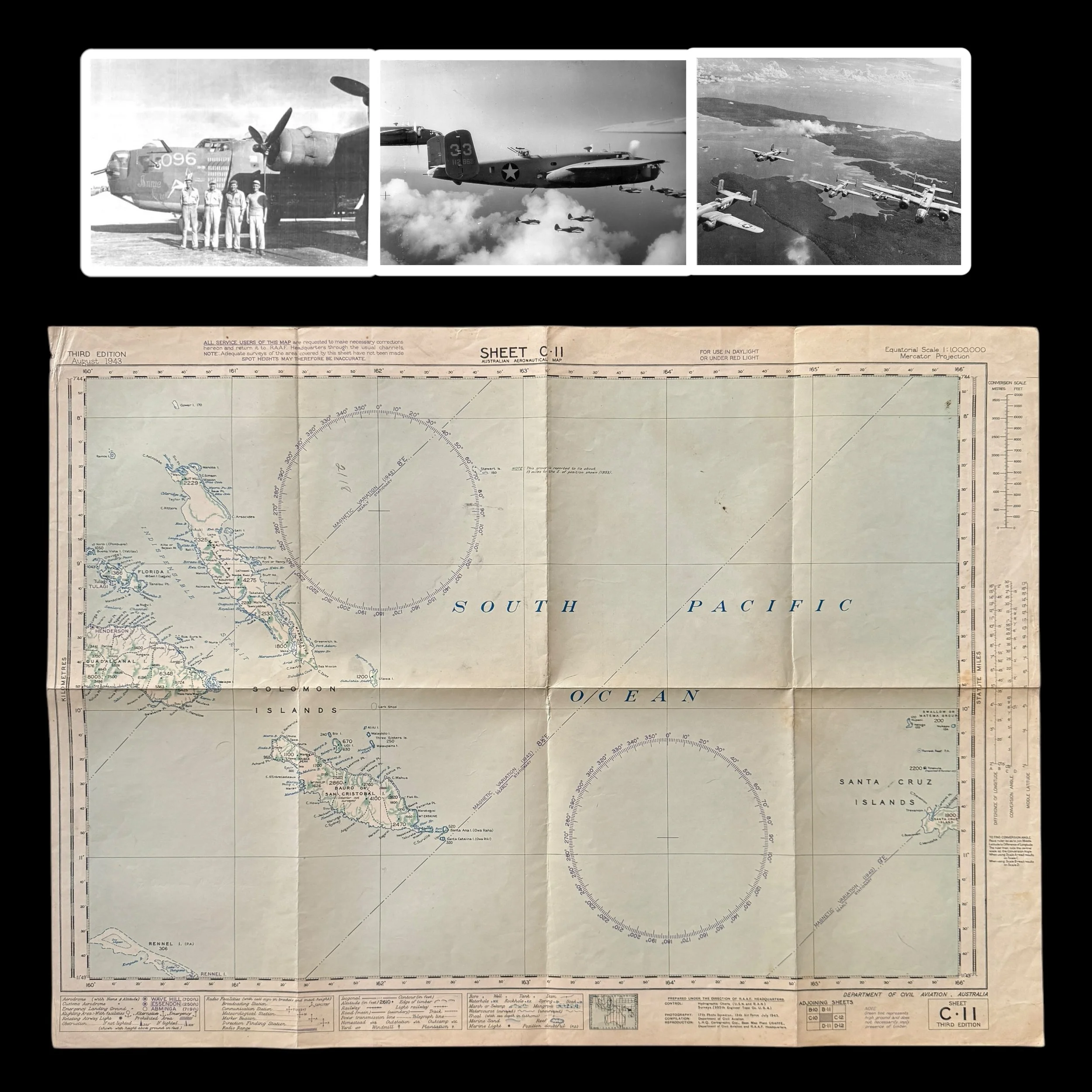
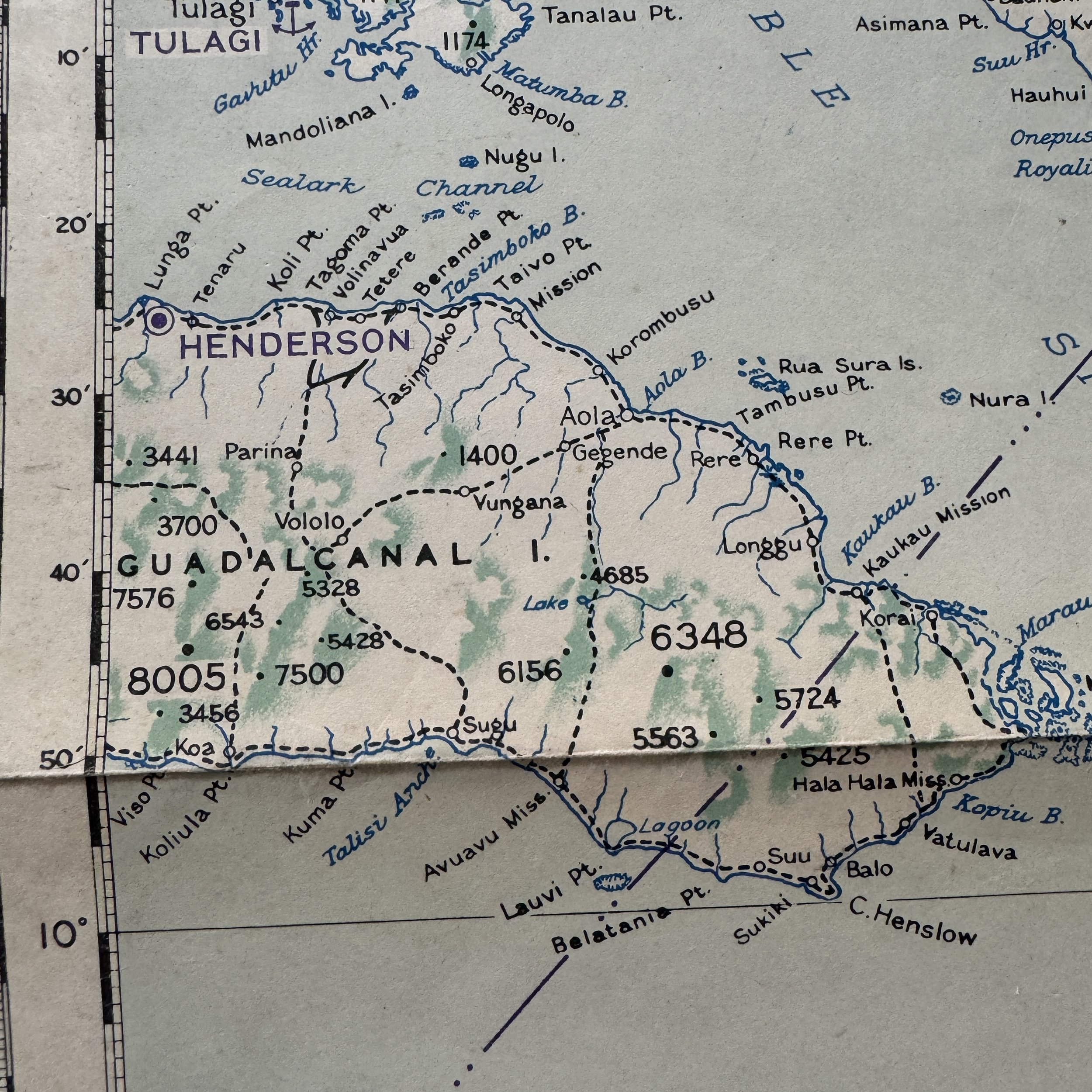


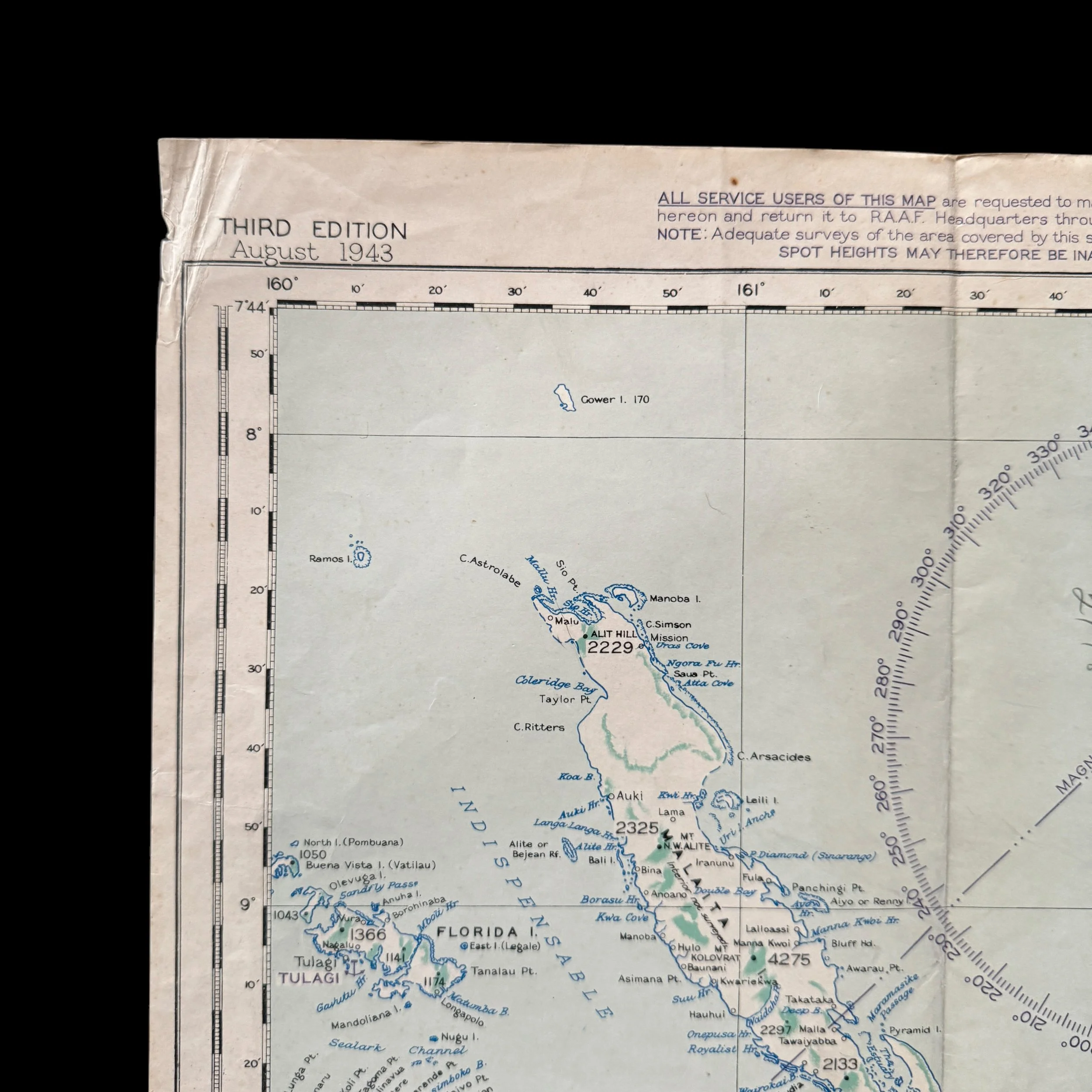
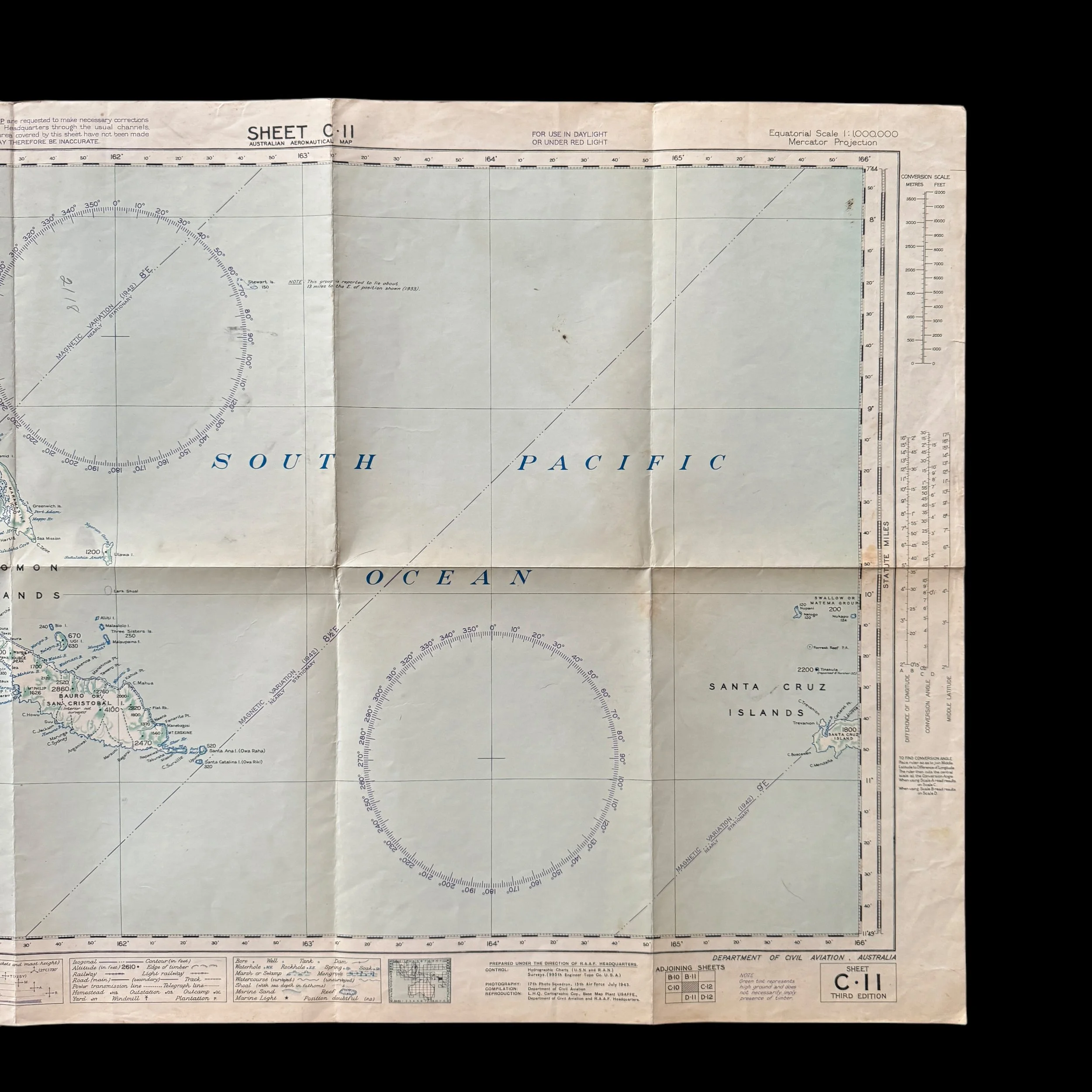
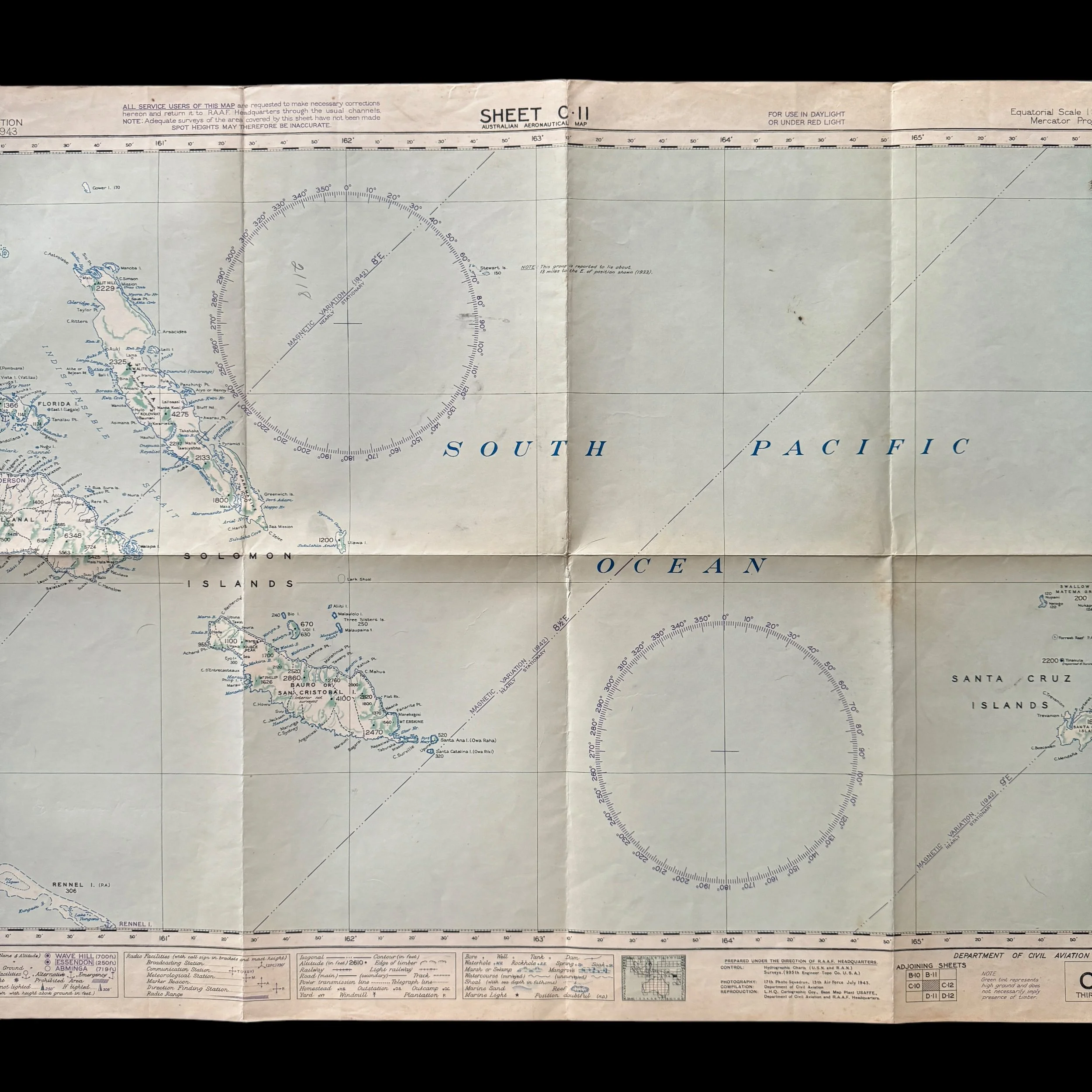
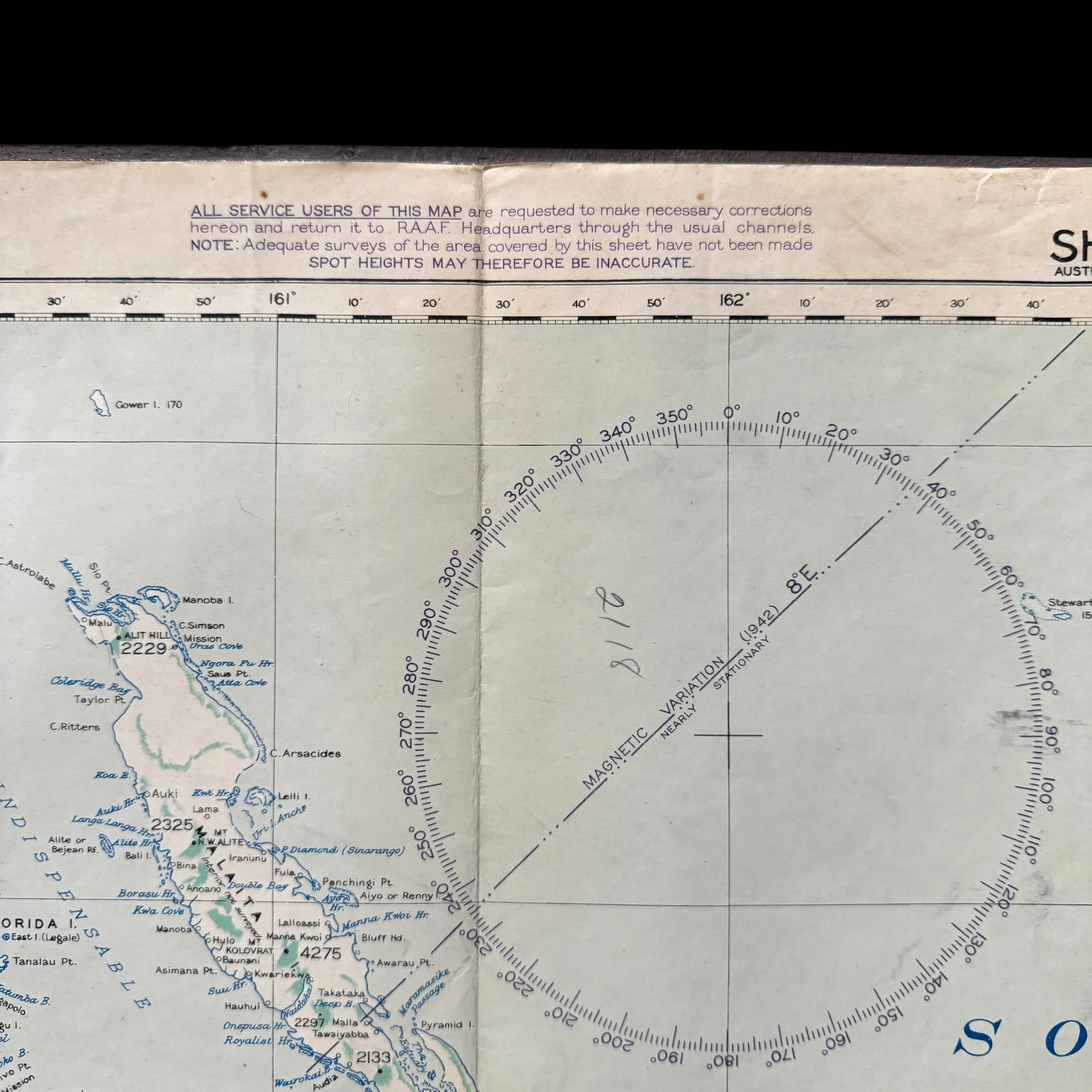
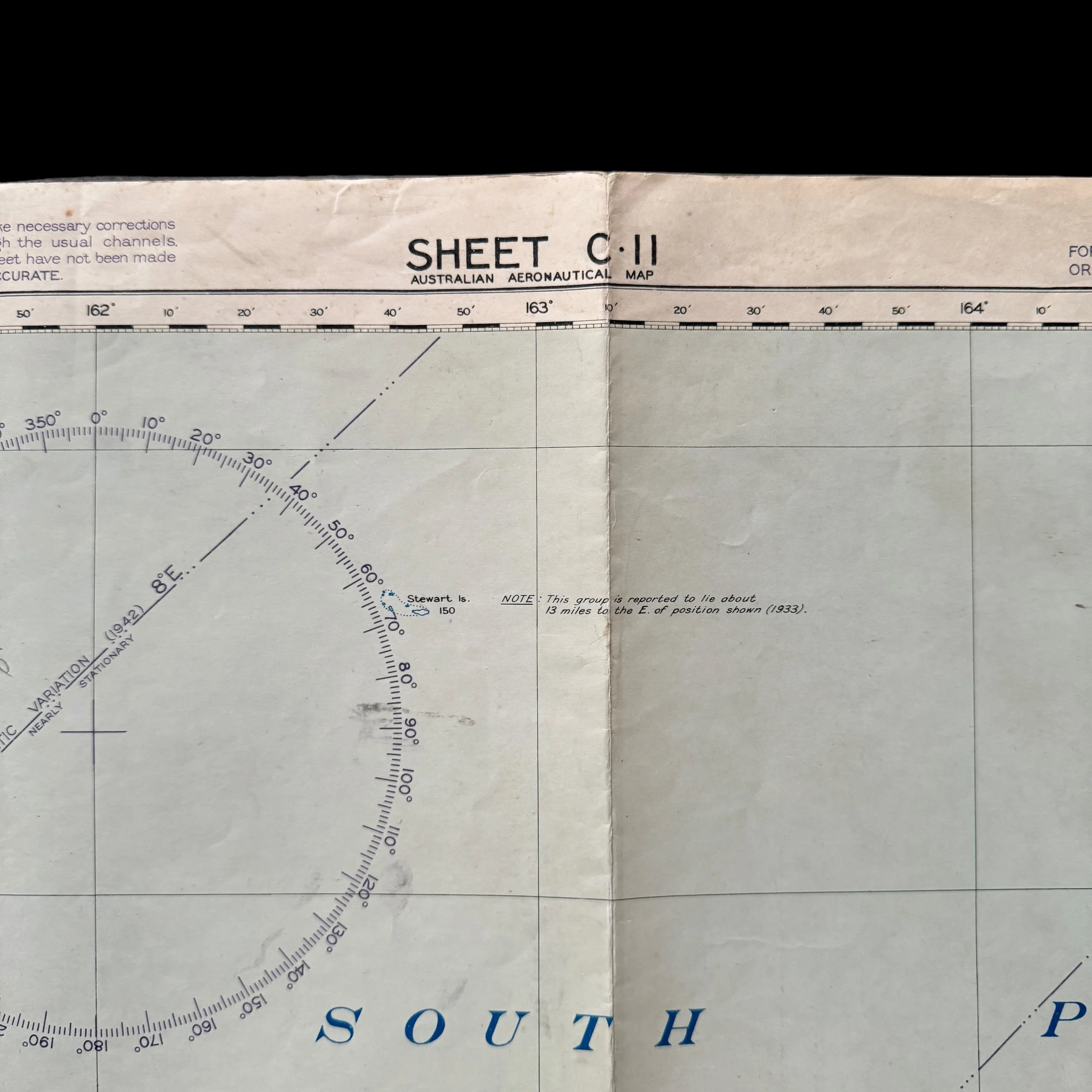
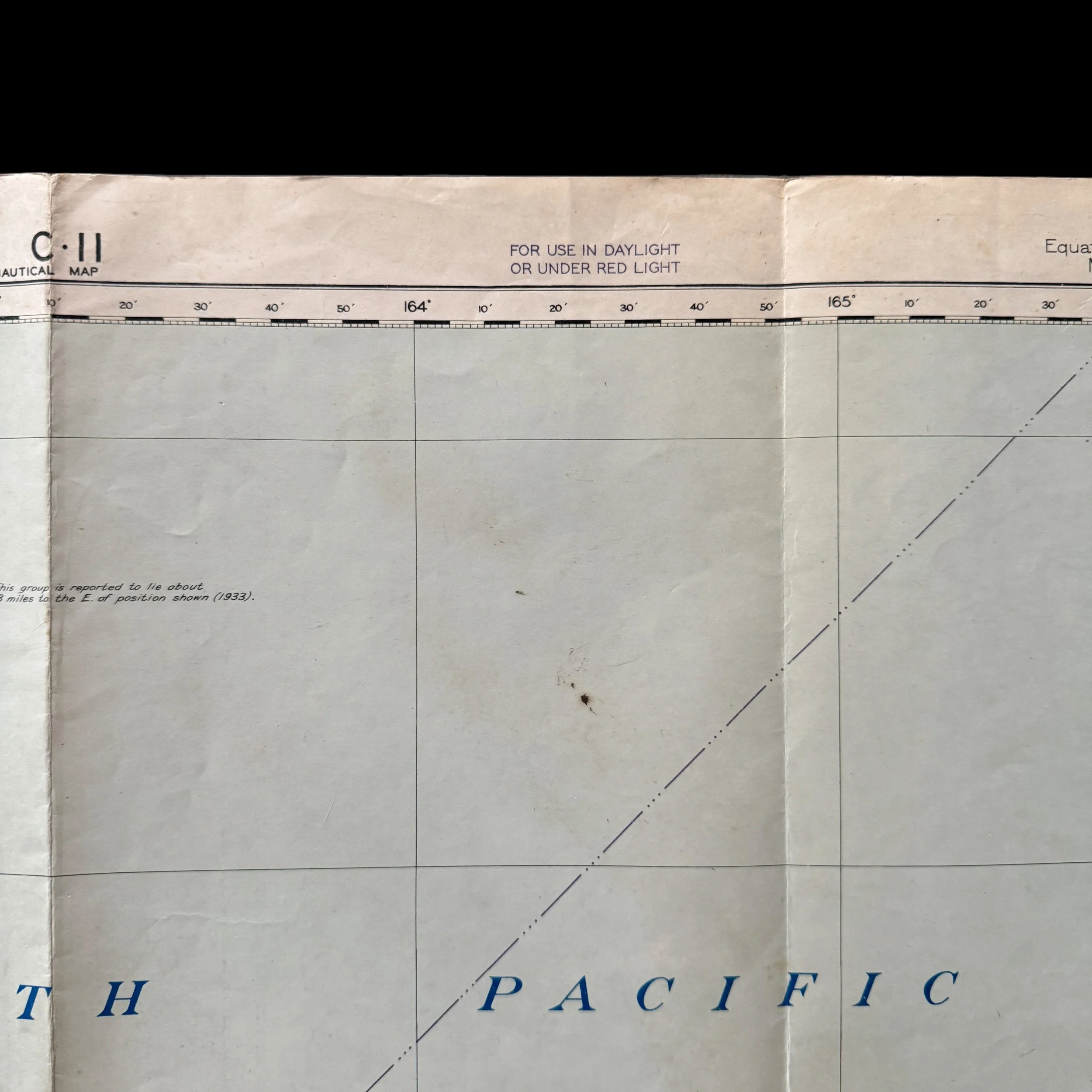
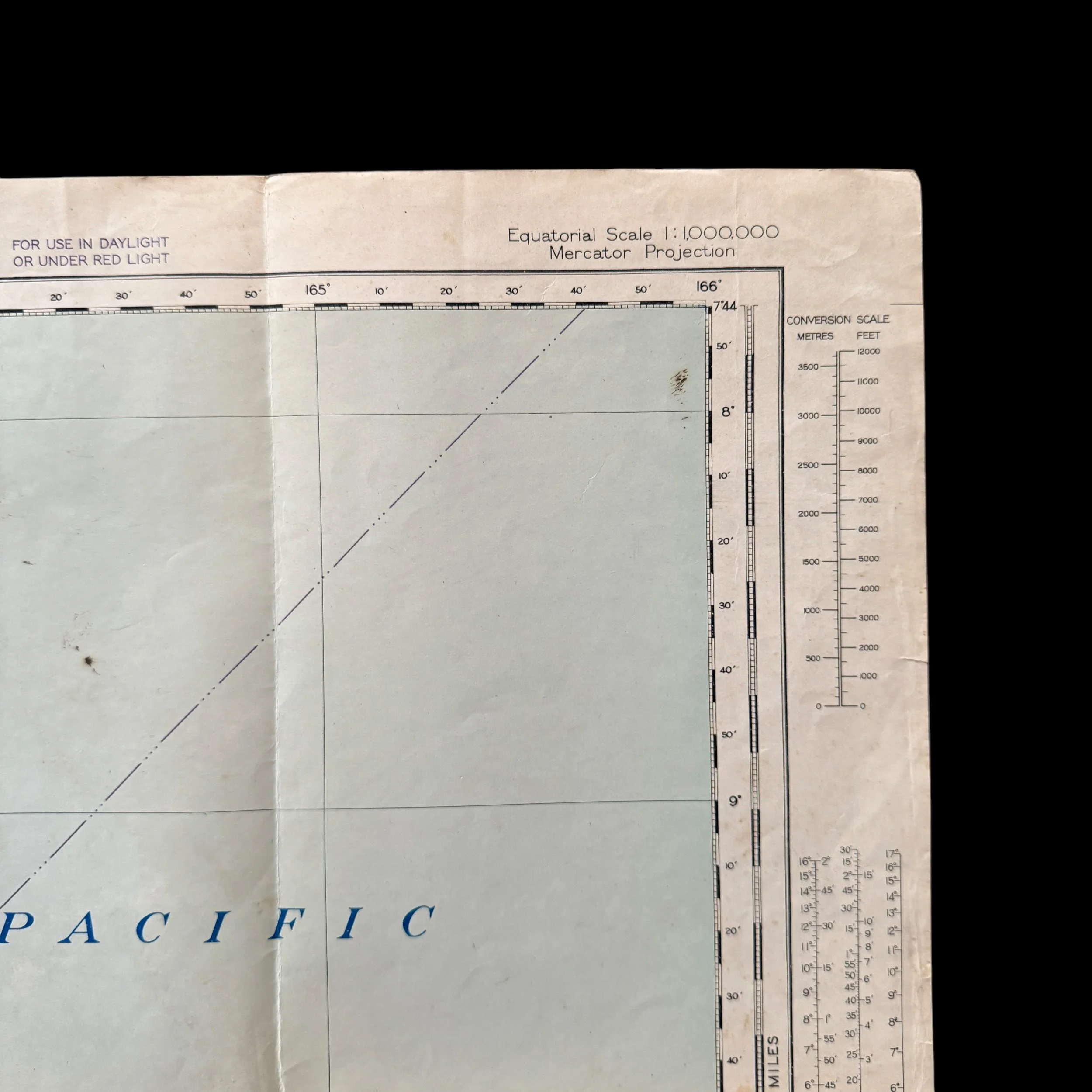
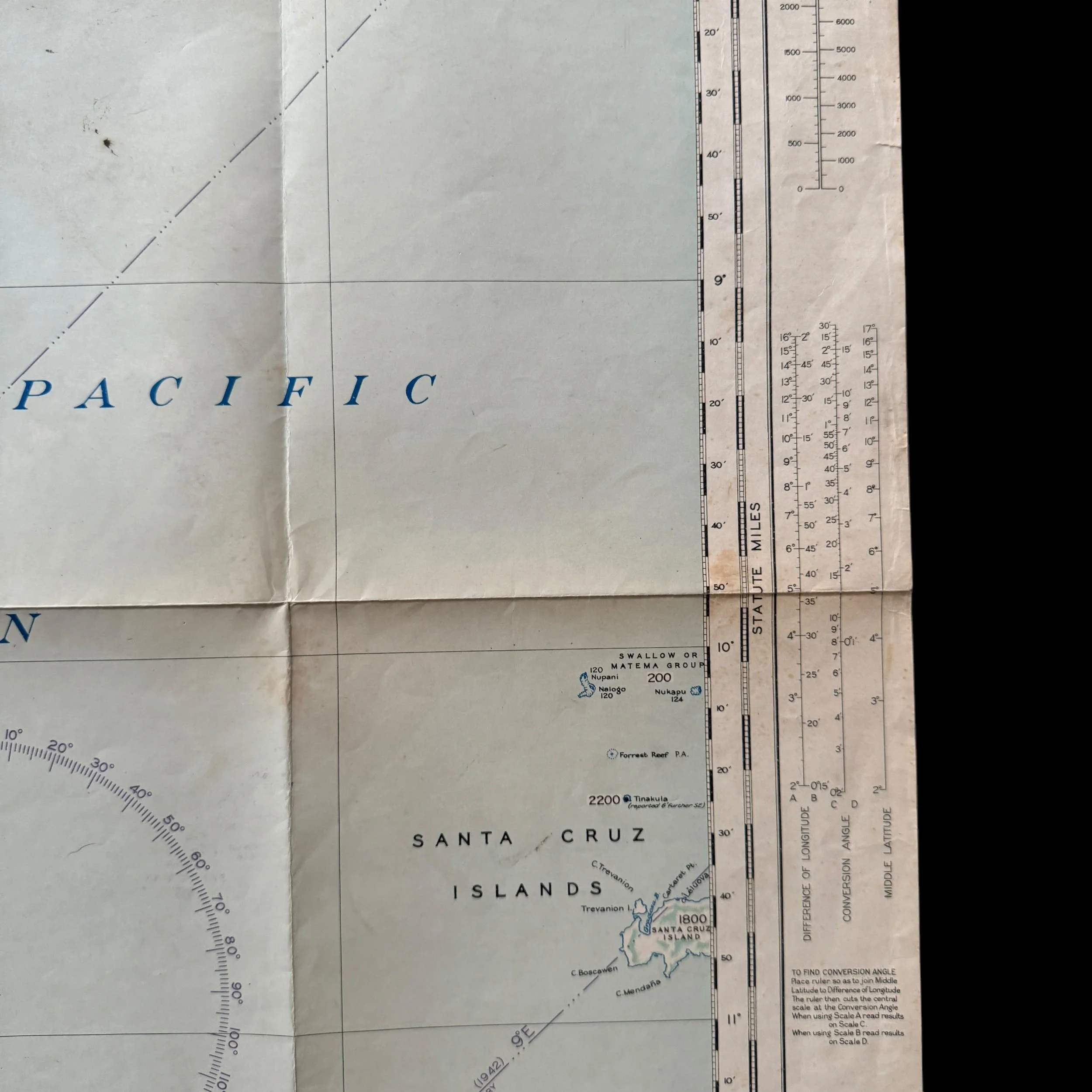

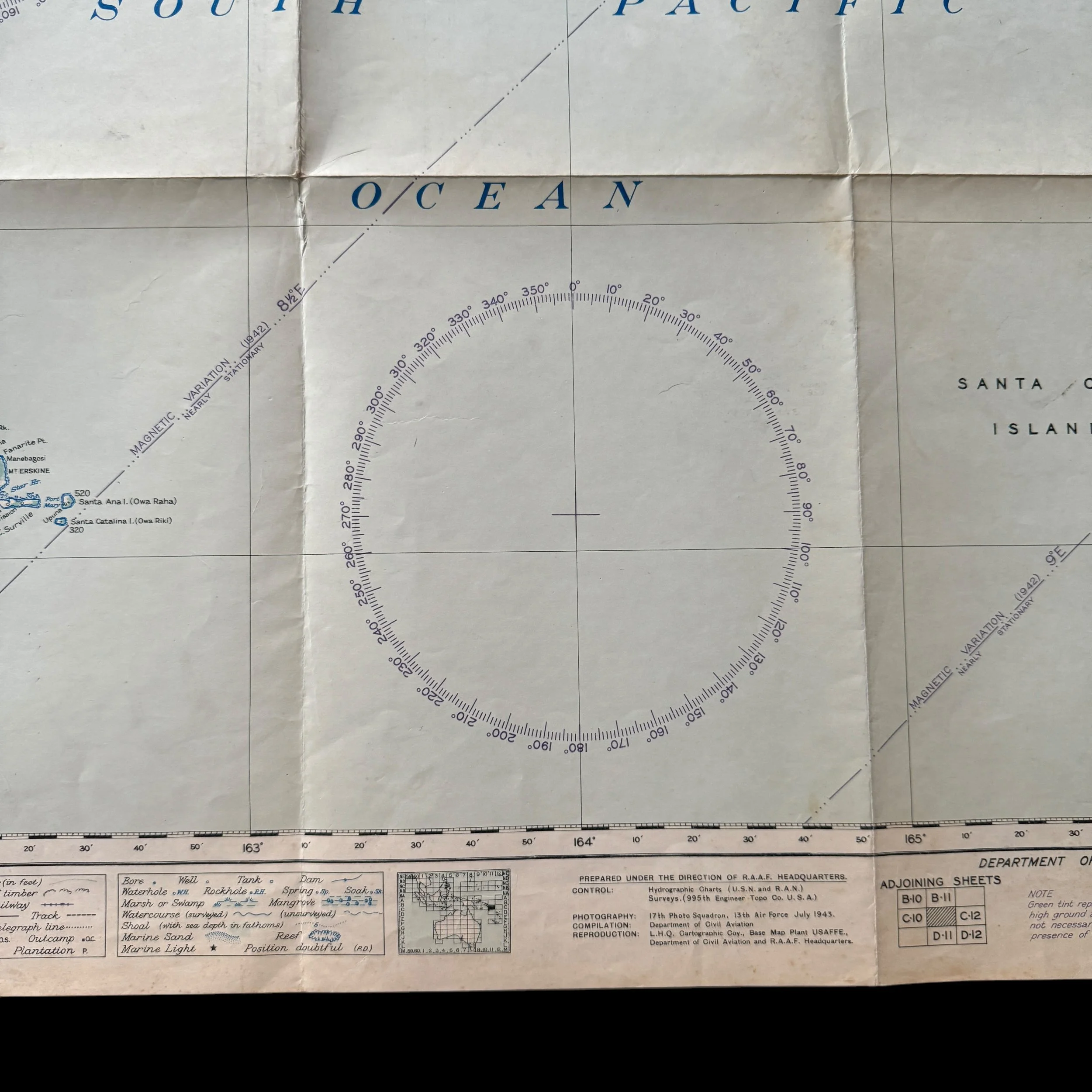
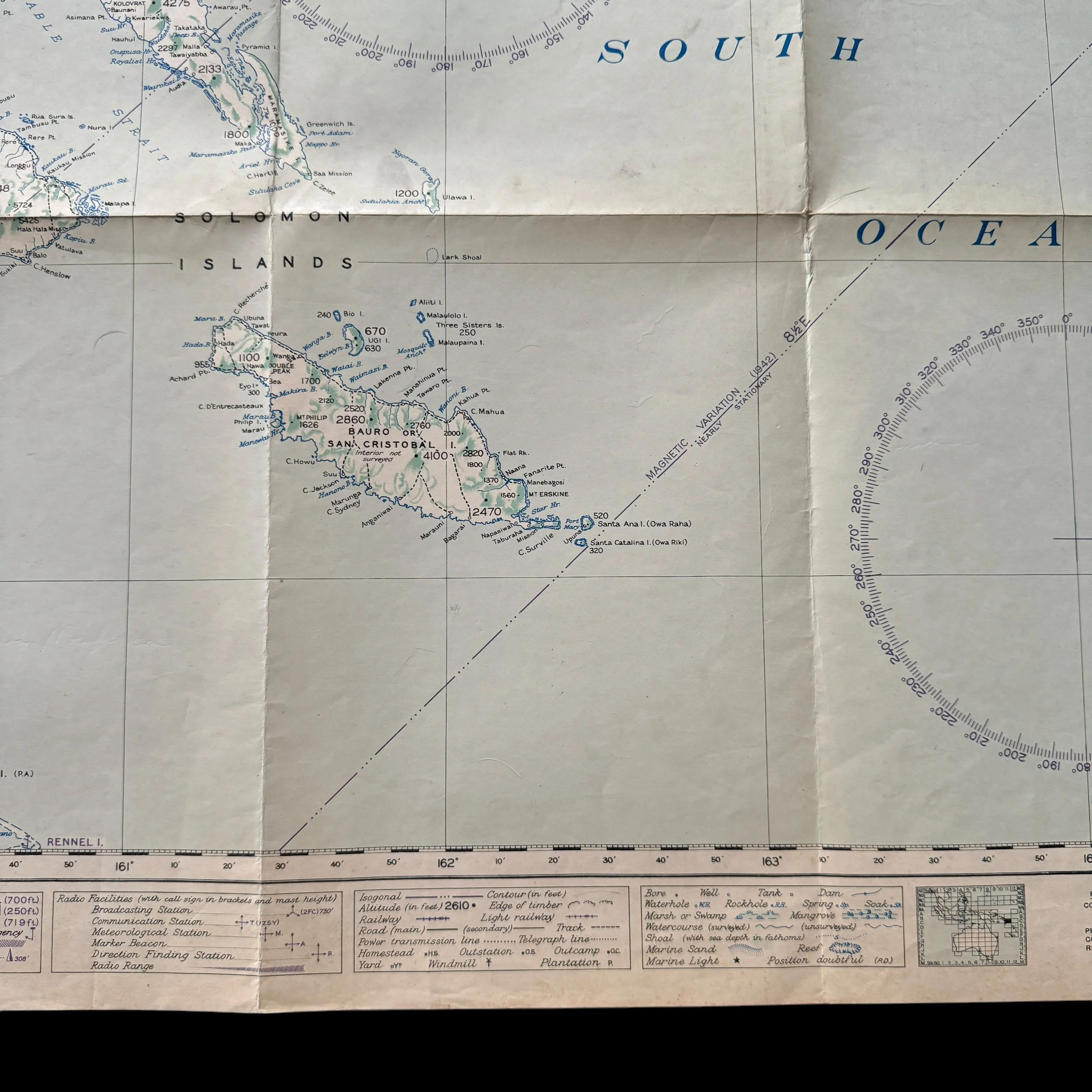
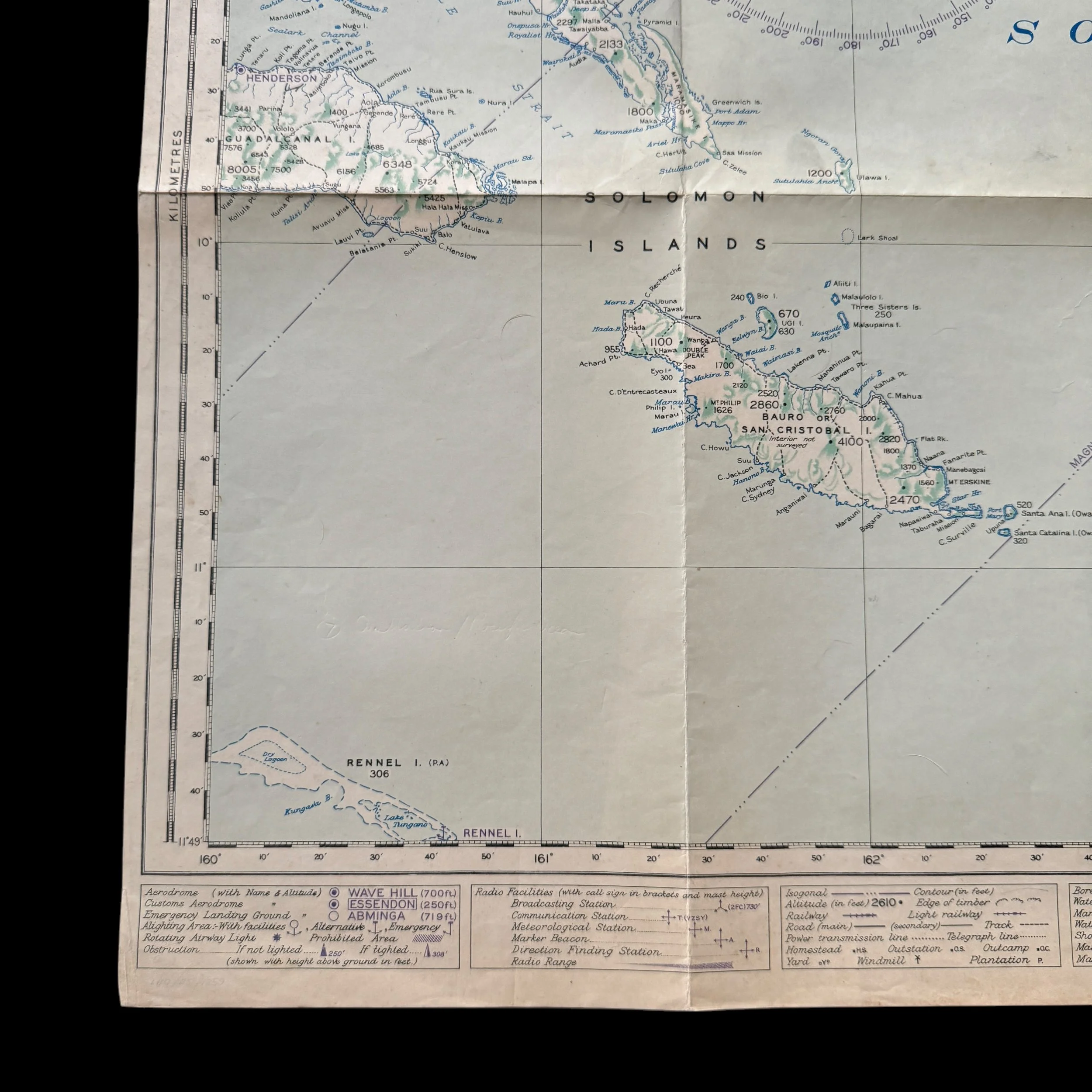
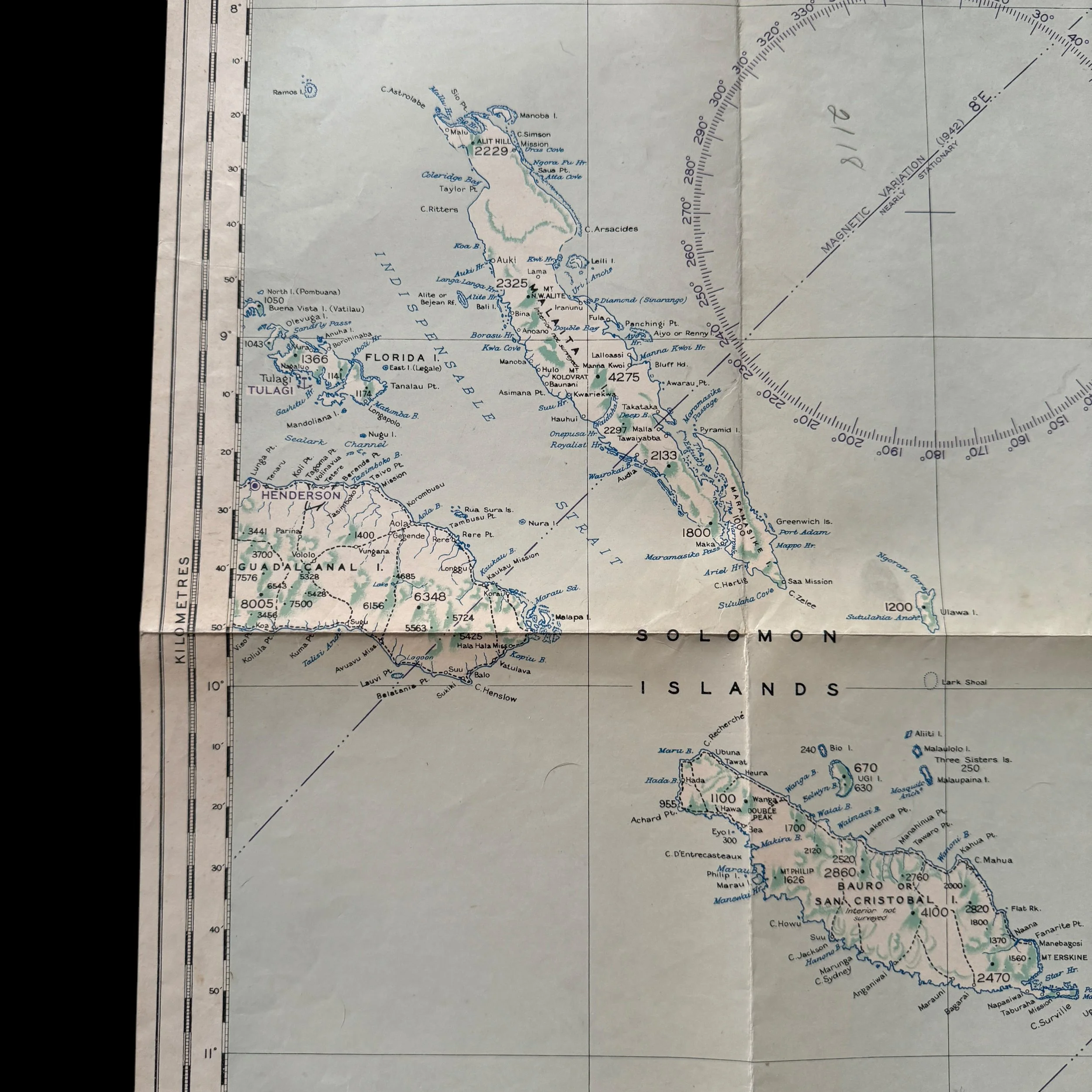


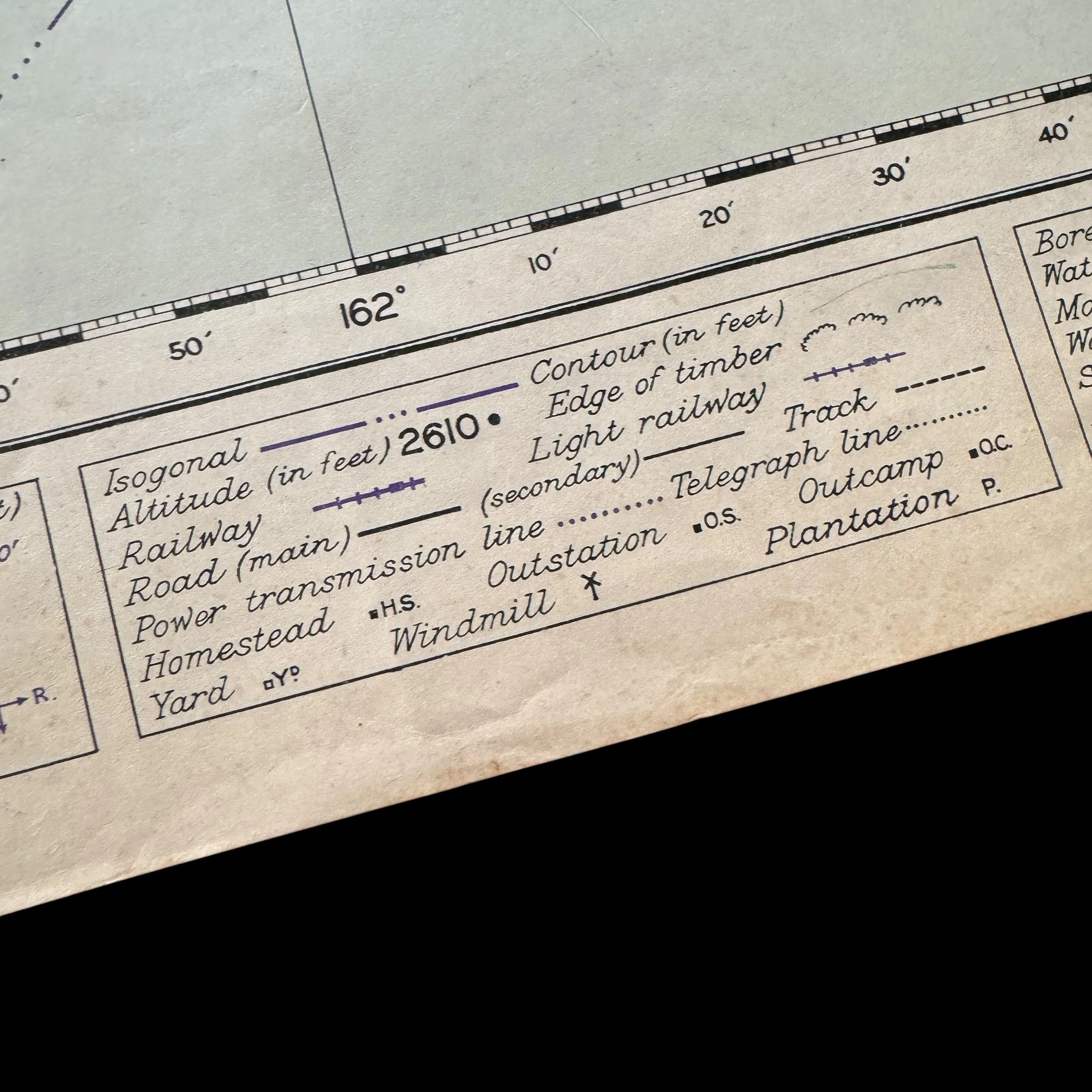
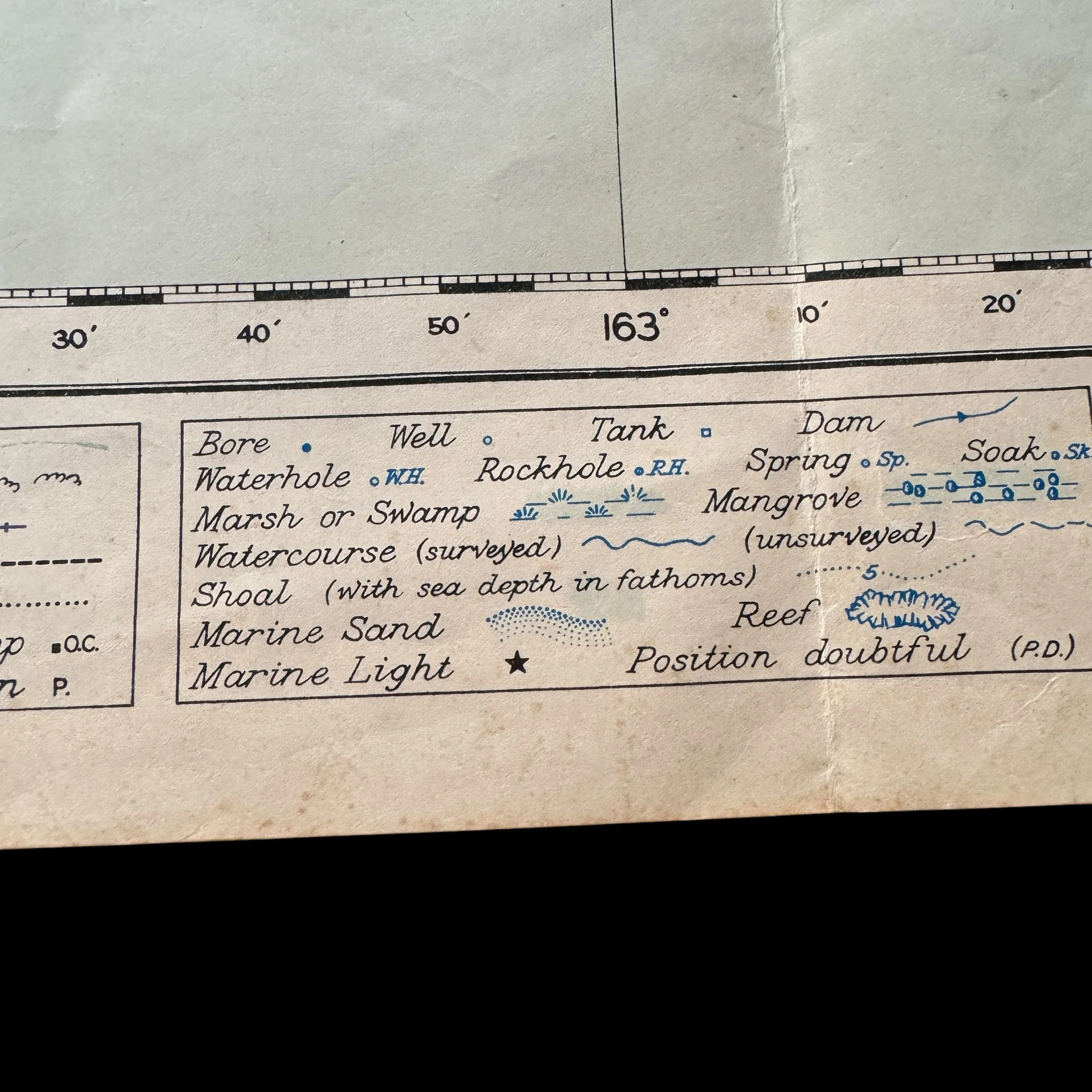

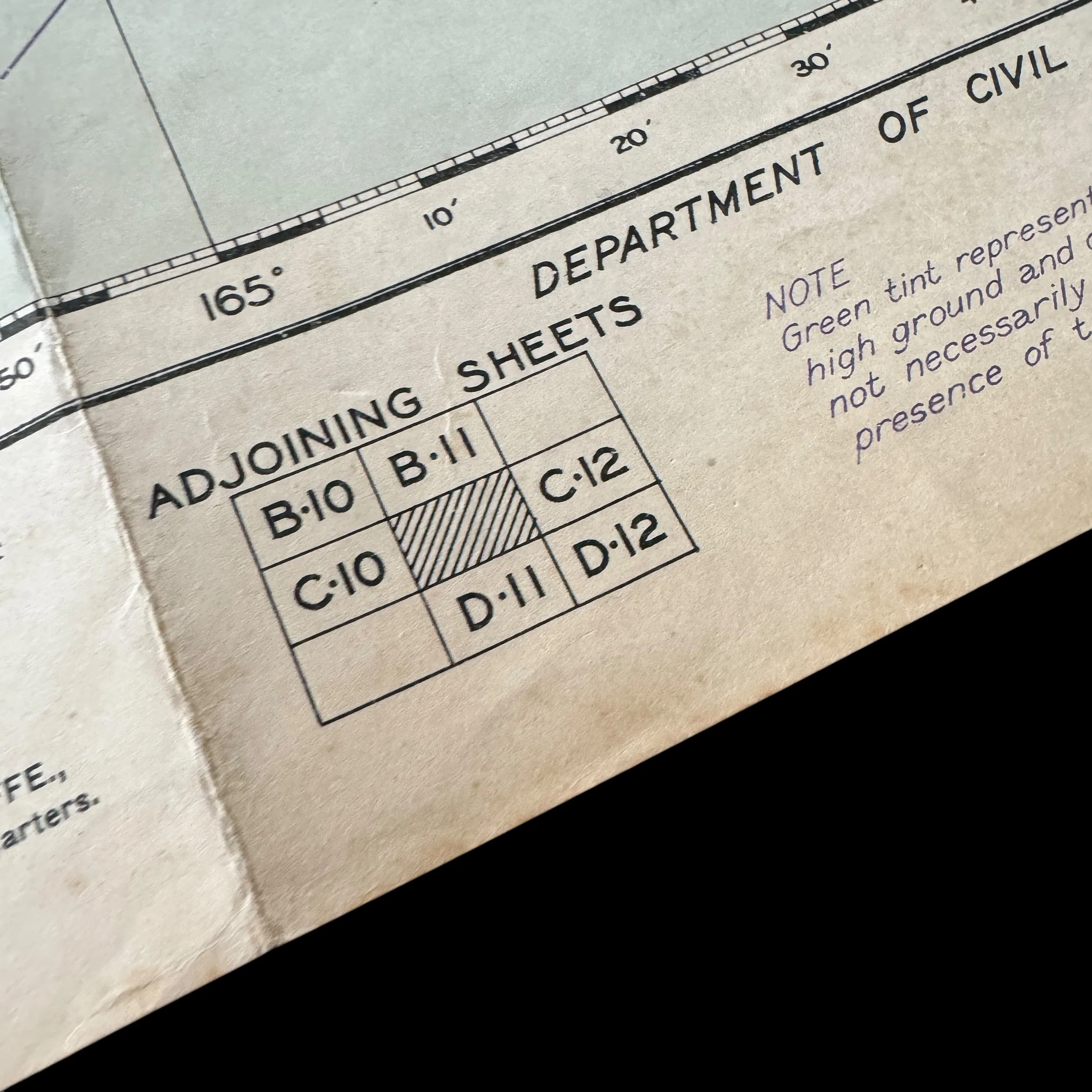
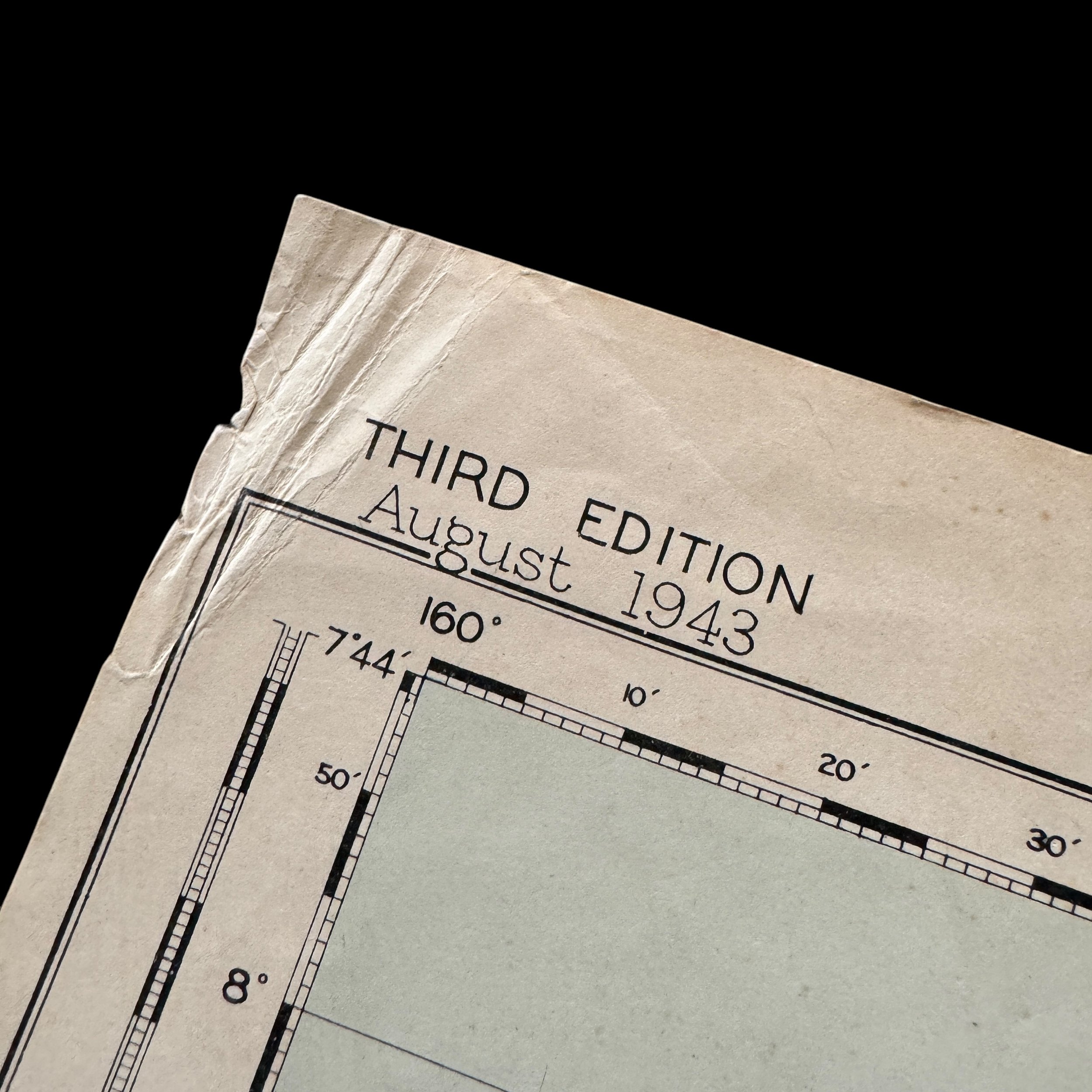
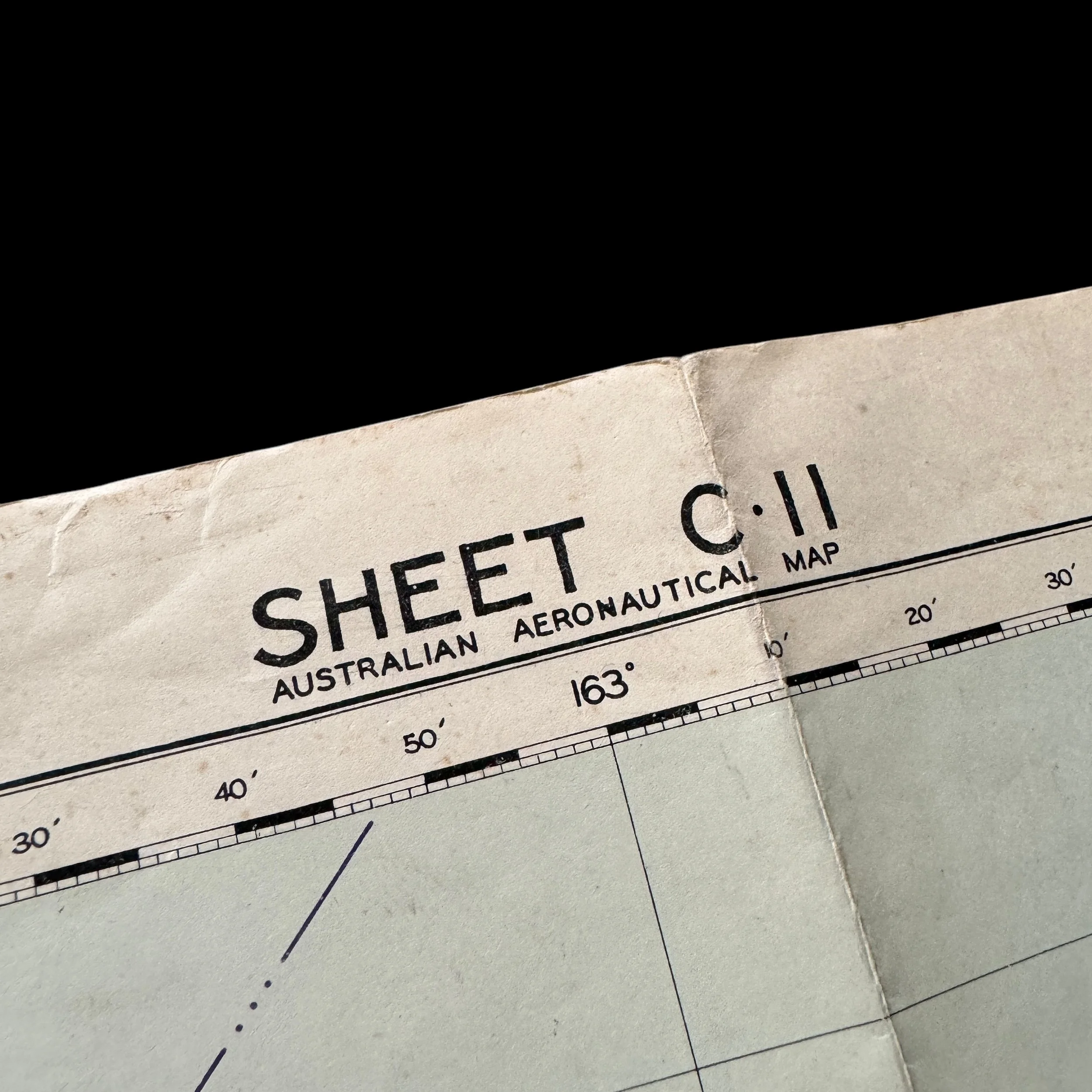
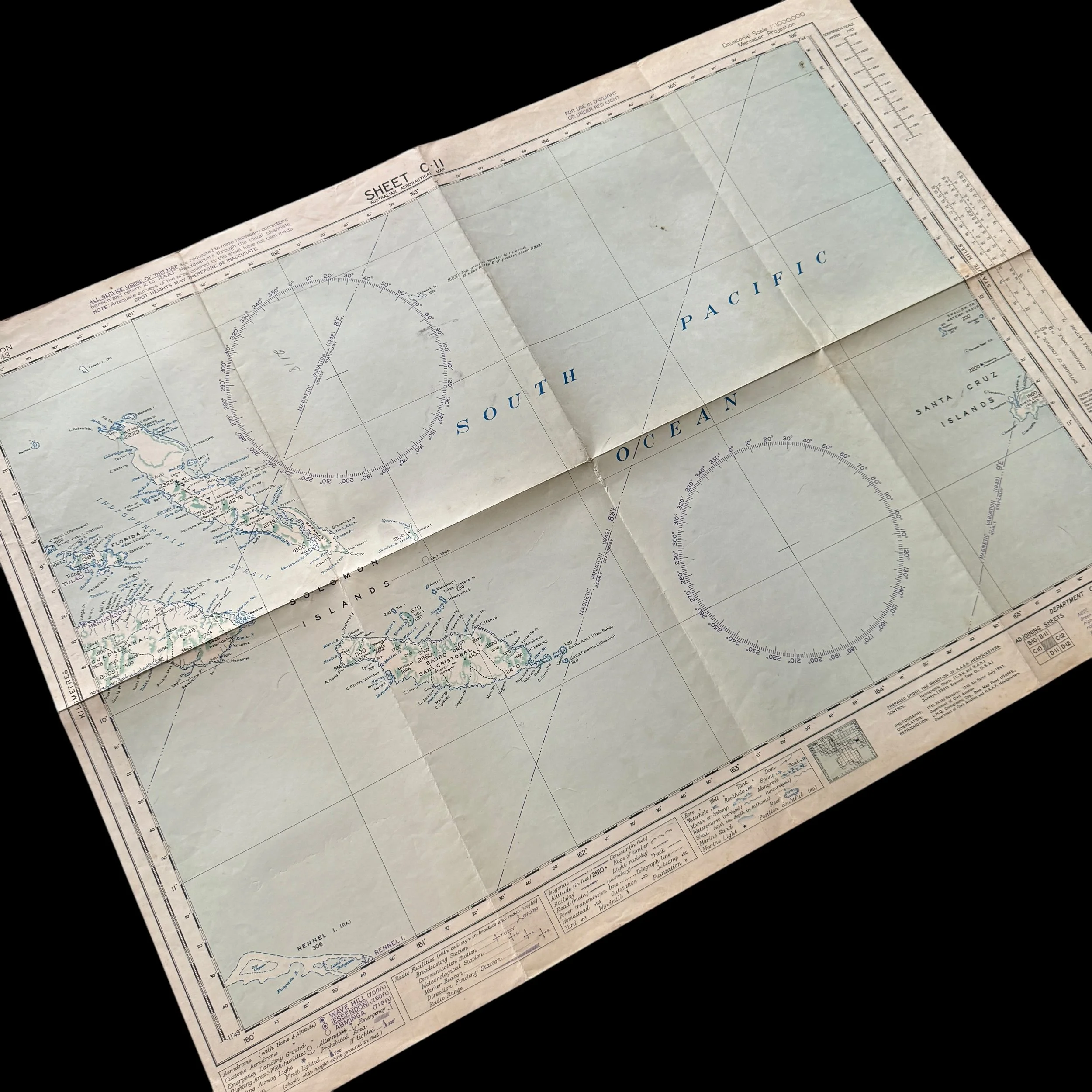



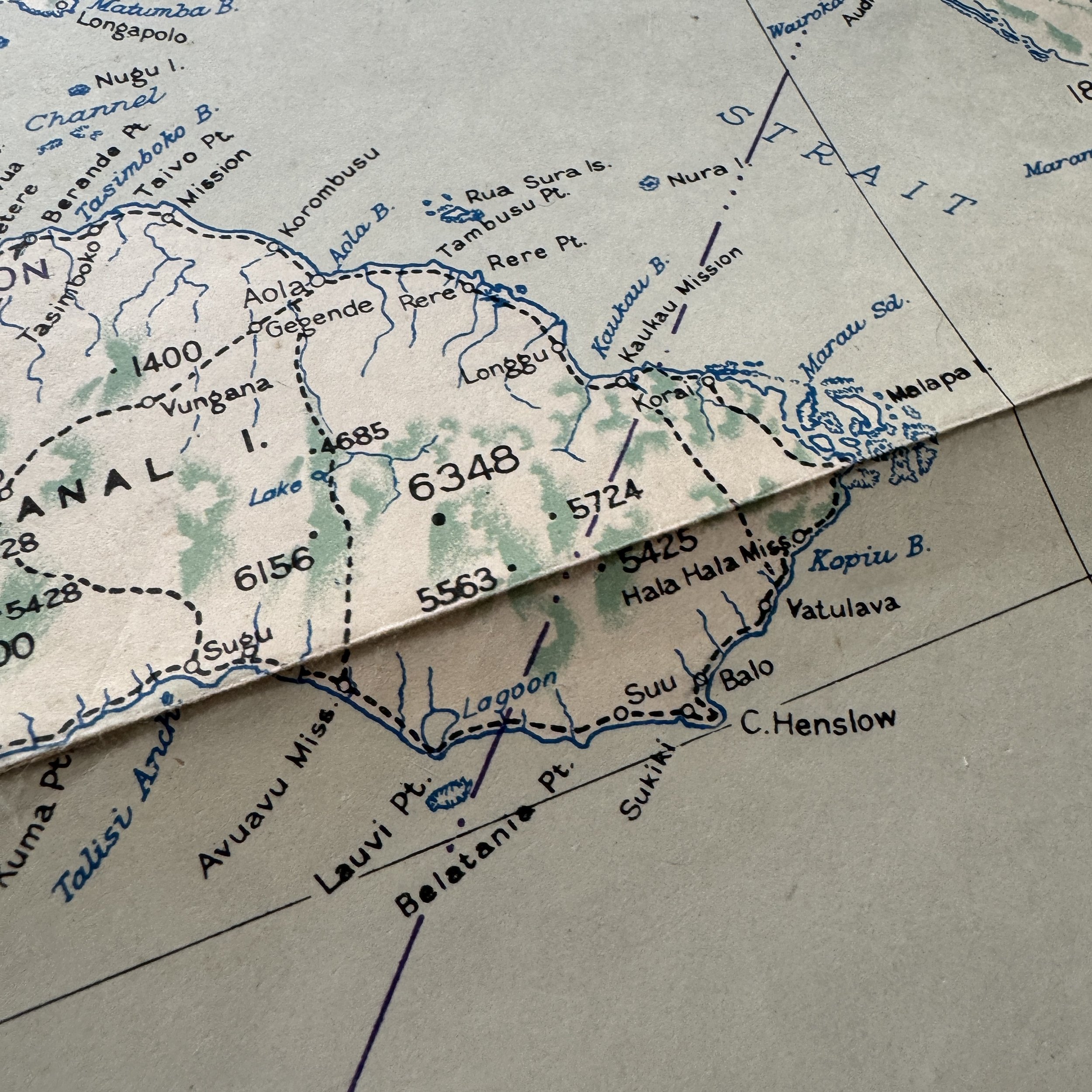



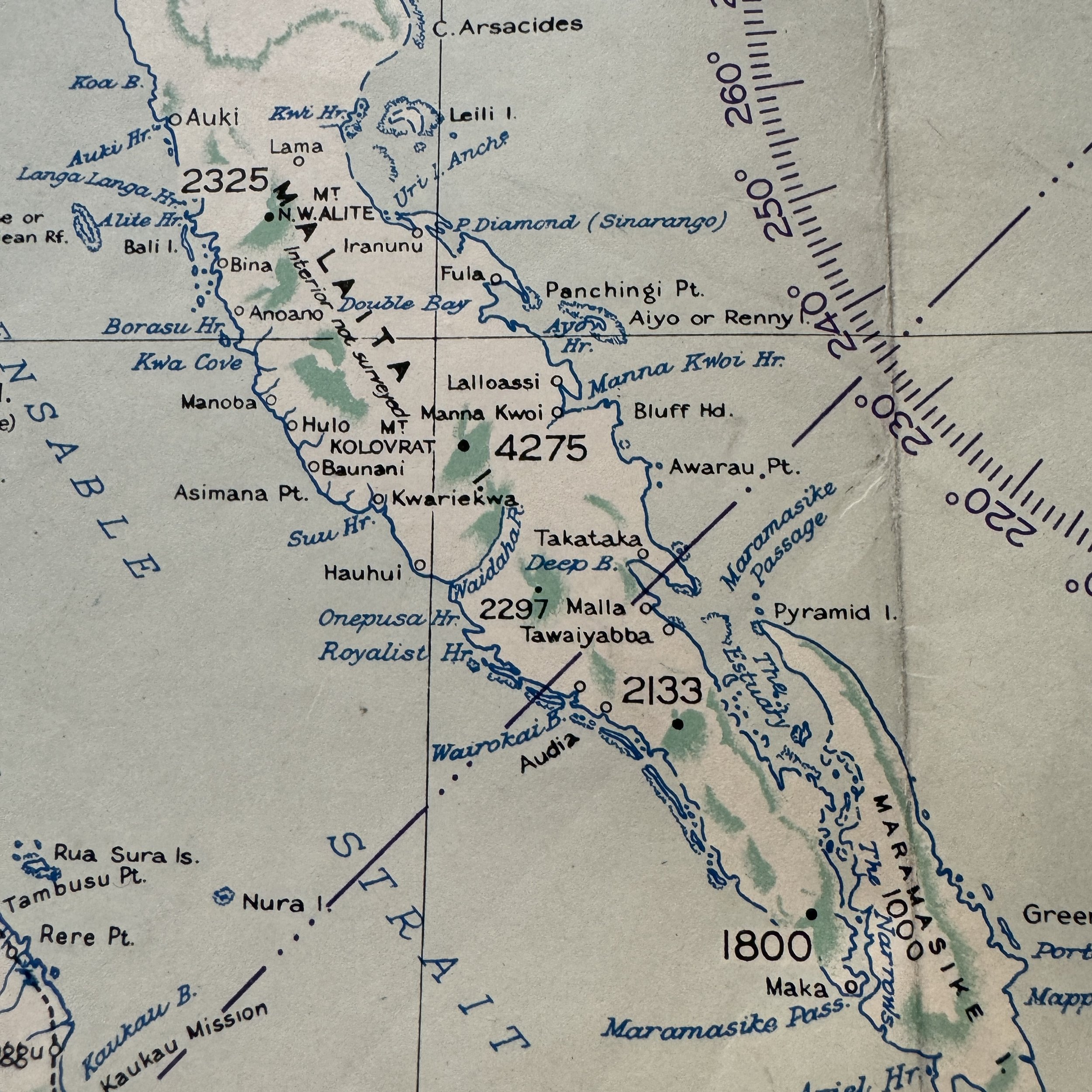
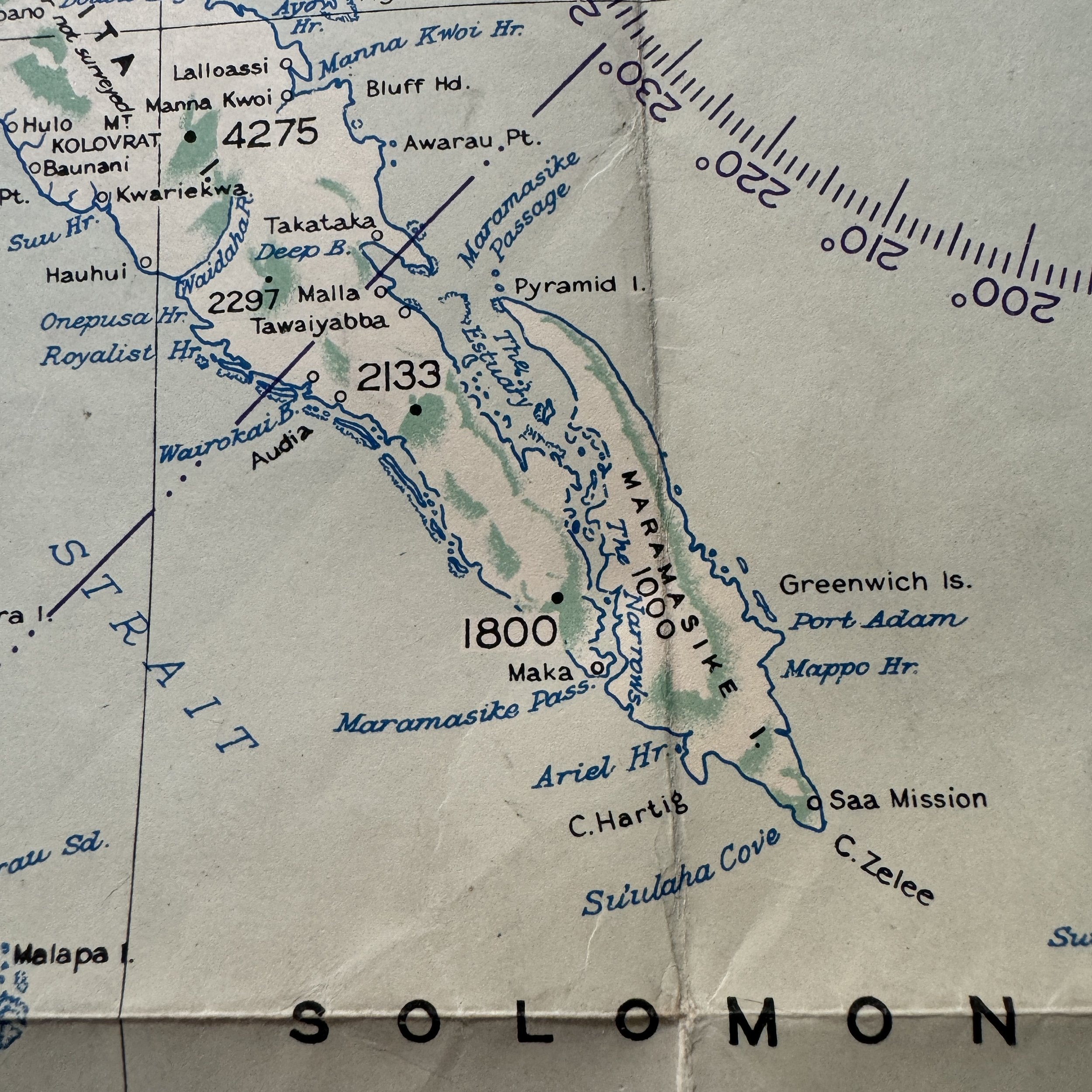



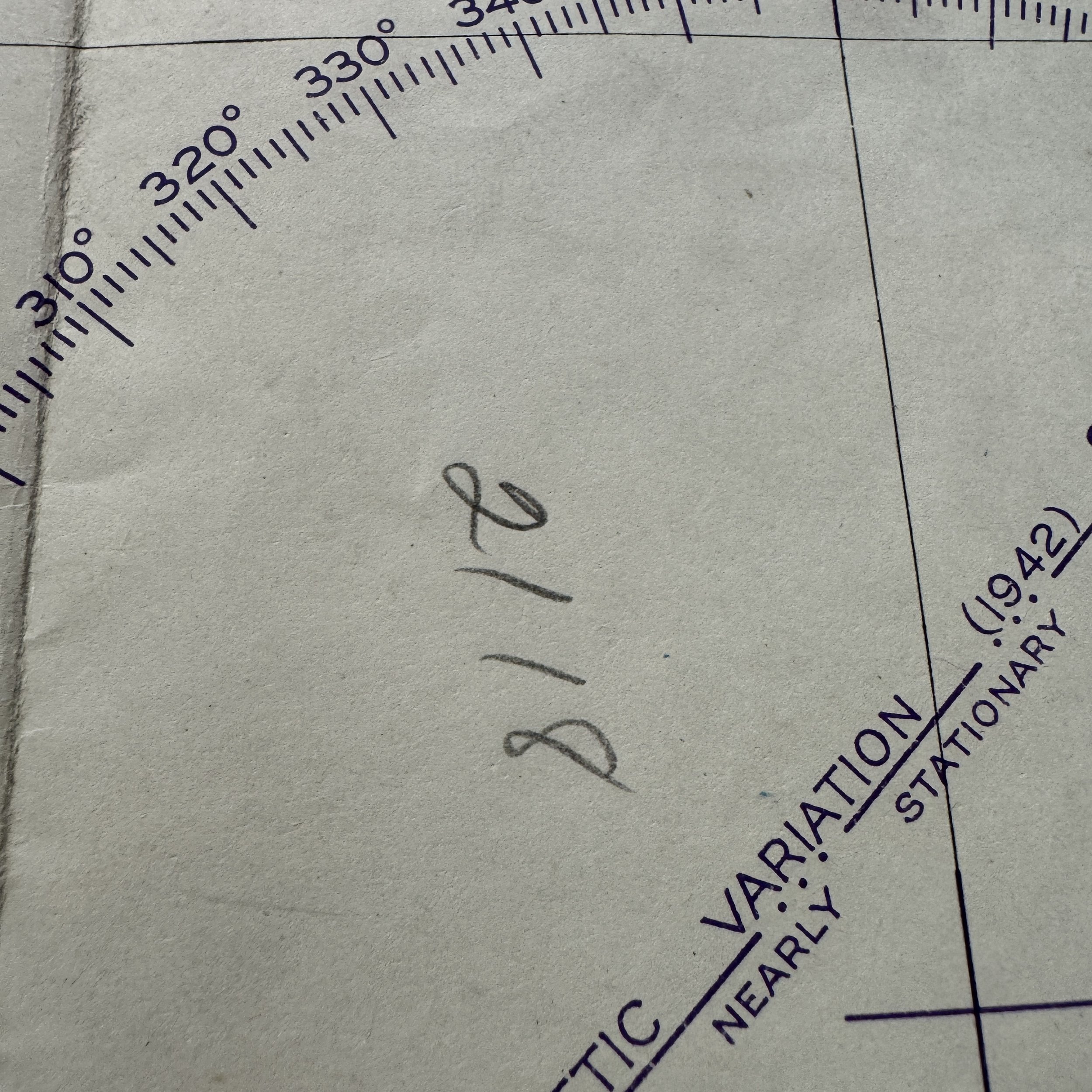
RARE! WWII 1943 U.S. 13th Air Force Guadalcanal Solomon Islands U.S. Army Air Force Combat Flight Navigation Map
Comes with hand-signed C.O.A. and a full historical write-up
Type: Original World War II U.S. 13th Air Force Combat Flight Navigation Map
Campaign: Pacific Theater - Solomon Islands - Guadalcanal - Malaita - Florida Island - Santa Cruz Islands
The 13th Air Force played a pivotal role in the Solomon Islands campaign during World War II, particularly in operations around Guadalcanal, Malaita, Florida Island, and the Santa Cruz Islands. Activated in early 1943, it reinforced the U.S. air presence at Henderson Field on Guadalcanal, conducting bombing raids against Japanese supply convoys and engaging in aerial combat to secure air superiority. Malaita, though not a battleground, housed Allied coastwatchers who provided crucial intelligence on enemy movements, aiding the 13th Air Force in preemptive strikes. Florida Island served as a key logistical hub, enabling rapid aircraft maintenance and refueling, sustaining continuous air operations. The Santa Cruz Islands, though lightly occupied, were strategically significant, allowing the 13th Air Force to extend its bombing and reconnaissance reach into Japanese-controlled areas. Through relentless attacks on enemy supply lines, defensive patrols, and coordinated air operations, the 13th Air Force played a crucial role in weakening Japanese resistance, securing the Solomon Islands, and setting the stage for further Allied advances in the Pacific.
Size: 21.5 × 30 inches
This exceptionally rare and museum-grade World War II artifact is an original combat flight navigation map, dated August 1943, that was heavily used by the U.S. Army Air Forces operating in the Solomon Islands region of the Pacific Theater. This map was an essential tool for aerial operations, guiding bombers and reconnaissance aircraft through hostile skies as they executed strategic missions against entrenched Japanese positions. The combat map reflects the intensity of the battles fought over the South Pacific, where Allied air forces worked relentlessly to dismantle Japan’s military presence and secure vital staging grounds for future offensives.
This combat map was produced using aerial reconnaissance photography conducted by the 13th Air Force and compiled by the Land Headquarters under the South West Pacific Area Command. It was the result of a collaborative effort between the U.S. Army Air Forces and the Royal Australian Air Force, both of which played crucial roles in joint aerial operations against Japanese forces. This partnership combined American and Australian airpower to conduct coordinated strikes, reconnaissance missions, and logistical support that were instrumental in securing victory in the region. These coordinated efforts allowed for the precise targeting of enemy airfields, supply depots, and troop concentrations while ensuring that Allied forces maintained the necessary intelligence to adjust tactics as the campaign progressed.
The Solomon Islands campaign, spanning from 1943 through 1945, saw the U.S. Army Air Forces play a pivotal role in supporting Allied ground and naval operations, particularly in the battles for Guadalcanal and New Georgia. The primary U.S. air unit involved was the Thirteenth Air Force, which was established in January 1943 to oversee air operations in the South Pacific. Their mission included securing air superiority, providing close air support for ground troops, and interdicting Japanese supply lines to weaken enemy operational capabilities. These efforts were crucial in maintaining momentum for the Allied offensive and ensuring the security of Guadalcanal as a base for further operations.
Following the initial landings on Guadalcanal in August 1942, the U.S. Army Air Forces intensified their efforts to establish control over the island and its strategic airfield, Henderson Field. Throughout 1943, the Thirteenth Air Force conducted numerous air superiority missions, engaging Japanese aircraft in dogfights to eliminate threats from the skies. At the same time, they provided essential close air support for U.S. Marine and Army units engaged in ground combat, striking enemy artillery positions and troop concentrations. Additionally, sustained interdiction missions targeted Japanese reinforcements and supply convoys attempting to reach Guadalcanal from bases in the northern Solomons. These operations played a decisive role in solidifying Allied control over the island and setting the stage for further offensives across the Solomon Islands chain.
As part of the broader Allied strategy to neutralize the major Japanese stronghold at Rabaul, the New Georgia campaign was launched in June 1943, with the objective of capturing the strategically vital Munda airfield. The Thirteenth Air Force played a crucial role in this operation by conducting pre-invasion bombardments on Japanese defensive positions, softening enemy fortifications ahead of amphibious landings. During the landings on Rendova Island and subsequent assaults on New Georgia, U.S. air forces provided continuous air cover and direct support for ground troops. Sustained air attacks targeted Japanese troop concentrations, supply depots, and infrastructure, significantly weakening enemy resistance. The capture of Munda airfield in August 1943 provided the Allies with a vital forward base, allowing them to extend their reach into the northern Solomons and apply further pressure on Japanese forces defending Rabaul.
Following victories in Guadalcanal and New Georgia, the Thirteenth Air Force shifted its focus to Bougainville and other key locations in the Solomons. During the Bougainville campaign, the air force provided crucial support for landings and subsequent operations, including air cover for troop movements and bombing missions against heavily fortified Japanese positions. Simultaneously, the Allies launched a sustained aerial bombardment campaign against Rabaul, a critical Japanese naval and air base. By relentlessly targeting Rabaul’s airfields, supply depots, and defensive positions, the Thirteenth Air Force helped neutralize one of the most formidable Japanese strongholds in the Pacific. These missions effectively isolated Rabaul, preventing it from being used as a launching point for further Japanese counteroffensives.
Throughout these campaigns, the Thirteenth Air Force utilized a variety of aircraft suited to different mission profiles. P-38 Lightnings and P-40 Warhawks were employed for air superiority and ground attack missions, ensuring dominance over the skies. B-24 Liberators and B-25 Mitchells carried out both strategic and tactical bombing operations, striking enemy positions with devastating efficiency. Additionally, F-5 Lightnings, a reconnaissance variant of the P-38, were used to gather intelligence on Japanese troop movements and fortifications, enabling precise targeting for bombing raids. These aircraft operated from airstrips across the Solomon Islands, including Henderson Field on Guadalcanal and newly secured airfields in New Georgia and Bougainville.
The coordinated efforts of the U.S. Army Air Forces, in conjunction with naval and ground forces, were crucial in achieving Allied objectives in the Solomon Islands. By securing air superiority, disrupting Japanese logistics, and providing continuous support for amphibious operations, the Thirteenth Air Force played an essential role in shaping the outcome of the Pacific War. Their relentless operations helped pave the way for the final Allied advances, significantly weakening Japan’s ability to maintain control over its Pacific territories.
This combat flight navigation map is a tangible relic of the intense aerial operations that took place in the Solomon Islands during World War II. It represents the meticulous planning and execution of strategic bombing missions, reconnaissance flights, and air-to-ground assaults that were necessary to dismantle the Japanese military presence in the Pacific. Its historical significance lies in its direct connection to the air campaigns that helped turn the tide of the war, allowing Allied forces to push ever closer to Japan. This artifact stands as a rare and invaluable piece of history, embodying the bravery, innovation, and strategic expertise that defined the U.S. Army Air Forces’ role in securing victory in the Pacific Theater.
The 13th Air Force in the Solomon Islands Campaign: Securing Air Superiority in the Pacific:
The 13th Air Force played a crucial role in the Solomon Islands campaign during World War II, particularly in operations surrounding Guadalcanal, Malaita, Florida Island, and the Santa Cruz Islands. Activated on January 13, 1943, and headquartered in the South Pacific, the 13th Air Force was tasked with supporting Allied operations in the region, engaging in bombing raids, aerial reconnaissance, and escort missions to weaken Japanese positions and provide strategic air superiority.
During the Solomon Islands campaign, Guadalcanal was the central focus of the initial Allied counteroffensive against Japan. By the time the 13th Air Force entered operations, the Battle of Guadalcanal had already begun, with the U.S. Marine Corps seizing Henderson Field in August 1942. This airfield became a critical base for American aircraft, allowing the Allies to challenge Japanese air superiority in the region. The 13th Air Force contributed significantly to operations on Guadalcanal by reinforcing aerial capabilities with heavy and medium bombers, as well as fighters that engaged Japanese aircraft attempting to regain control of the skies. Missions from Guadalcanal targeted Japanese supply convoys, known as the “Tokyo Express,” which attempted nightly resupply runs to reinforce Japanese positions on the island. By conducting relentless bombing raids and air patrols, the 13th Air Force helped to starve Japanese forces of crucial reinforcements and supplies, ultimately forcing their withdrawal from Guadalcanal in early 1943.
Malaita, an island to the north of Guadalcanal, played a more indirect yet significant role in the air campaign. Though it was not a major battlefield, Malaita was used by Allied intelligence operatives and coastwatchers, who provided critical early warnings of incoming Japanese aircraft. These coastwatchers, stationed on Malaita and other nearby islands, relayed vital information to the 13th Air Force and other Allied commands, allowing for timely interceptions and defensive preparations. The presence of these intelligence operatives meant that American air units could better anticipate Japanese movements and launch preemptive strikes, reducing the effectiveness of enemy air raids against Allied positions.
Florida Island, located just north of Guadalcanal, also became an important operational base for the 13th Air Force. As the Allies gained control of the Solomon Islands, Florida Island was developed into a logistical and support hub, housing supply depots and maintenance facilities for aircraft operating in the region. The proximity of Florida Island to Guadalcanal allowed for quick refueling and rearming of aircraft, ensuring that missions could be launched more efficiently. This logistical advantage contributed to the sustained pressure that the 13th Air Force exerted on Japanese forces throughout the campaign, as it enabled continuous air operations with minimal downtime between sorties.
Further to the east, the Santa Cruz Islands played a critical role in the wider aerial battle of the South Pacific. Although these islands were not heavily occupied by Allied ground forces, they were the site of a major naval and air battle in October 1942, prior to the 13th Air Force's official activation. As the campaign progressed, the 13th Air Force used the proximity of the Santa Cruz Islands to extend its reach into enemy-held territory, conducting reconnaissance and long-range bombing missions against Japanese bases and naval units. These operations were instrumental in disrupting Japanese supply lines and weakening their ability to counter the growing Allied air presence in the region.
The 13th Air Force's efforts in the Solomon Islands campaign, particularly around Guadalcanal, Malaita, Florida Island, and the Santa Cruz Islands, played a crucial role in securing air superiority for the Allies. By eliminating Japanese threats in the skies, targeting enemy supply routes, and utilizing strategic island bases to sustain continuous operations, the 13th Air Force helped pave the way for the eventual recapture of the entire Solomon Islands chain. Their contributions not only supported ground forces but also set the stage for subsequent campaigns in the Central and Southwest Pacific, further isolating Japanese strongholds and bringing the Allies closer to ultimate victory in the Pacific War.